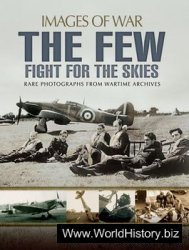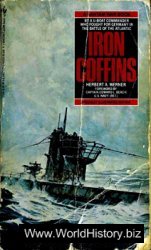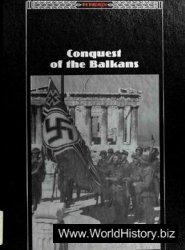A tiny passenger and commuter carrier at San Carlos, California, in 1973. Cessna 402 revenue flights commence on local routes, but cannot be maintained to year’s end.
PENN-AIRE: United States (1980). W. C. McQuaide establishes Penn-Aire at Altoona, Pennsylvania, in the spring of 1980 to offer scheduled passenger services to New York (LGA). Employing a Piper PA-31-310 Navajo, McQuaide inaugurates daily roundtrips in June. Expected traffic does not materialize and the company shuts down in July.
PENNSYLVANIA AIR LINES AND TRANSPORT COMPANY (PAL): United States (1930-1936). Early in November 1930, Clifford Ball Air Line is purchased by the Pittsburgh Aviation Industries Corporation (PAIC) and renamed Pennsylvania Air Lines (PAL). Both the holding company and airline have the same principal stockholder, board chairman, and president: George R. Hann. The previous passenger services between Cleveland, Pittsburgh, and Washington, D. C. and airmail flights between Cleveland and Pittsburgh are maintained.
The company’s inherited, two-year-old Contract Air Mail Route No.
II from Pittsburgh to Cleveland is extended to Washington on June 1, 1931 and a week later, PAL aircraft begin flying mail to the nation’s capital. While flying over Pittsburgh en route to Cleveland on November 28, the engine of Melvin Garlow’s New Standard D-27 quits; Garlow bails out safely, but the mailplane slams into the front of the city’s Exposition Building tearing away its front to a height of 100 feet.
Services continue without significant change in 1932. On October 21-22, while flying over the Allegheny Mountains near Somerset, Pennsylvania, Murl Estes’ mailplane catches fire, forcing him to bail out. The Ford 5-AT-53 is purchased from National Air Transport (NAT) on June 27, 1933. National Air Transport (NAT) will sell PAL four more Tri-Motors during the remainder of the year: 5-AT-52 on June 29,5-AT-26 on July 10, 5-AT-15 on October 17, and 5-AT-73 on November 29.
On February 9, 1934, the U. S. Post Office, as a result of charges in the so-called “Air Mail Scandal,” cancels all existing airmail contracts. The White House now calls upon the U. S. Army Air Corps to fly the mail, a military option that is not successful. PAL continues passenger and air express, sporadically, as it awaits the outcome of the government’s experiments. As a result of the Air Corps failure, the Post Office rebids the contracts at the end of March.
Prohibited from applying are any companies that had participated in the so-called “Airline Spoils Conference” hosted by Postmaster General W. F. Brown in 1930. As a result, PAL, like numerous other carriers, slightly changes its corporate identity, becoming Pennsylvania Air Lines and Transport Company. While retaining considerable influence due to his shareholding, Board Chairman George R. Hann resigns. The Post Office opens applications at the close of April.
A new Pittsburgh competitor, Central Airlines, underbids PAL for its old route and begins mail and passenger flights from Washington to Cleveland in May. The Washington-Cleveland passenger service is reopened by PAL in June, during which month the assets of the Kohler Aviation Corporation, which had ceased operations in March, are acquired by purchase. Late in June, the company wins a Detroit-Milwaukee mail contract, which it begins on July 5 with three Keystone-Loening C-2C amphibians obtained in the Kohler takeover. On December 26, the company announces the purchase of a fleet of Boeing 247Ds from United Air Lines (UAL). Former Kohler Chief Pilot Joseph Doerflinger, who had come over in the merger, is released at year’s end.
Late in 1935, competition with Central Airlines intensifies when the new entrant acquires Ford Tri-Motors. PAL loses heavily. The Fords 5-AT-15, 5-AT-26, 5-AT-53, and 5-AT-73 are sold to Lowell Yerex, founder of TACA (Transportes Aereos Centros-Americanos, S. A.), on January 21, 1936, while the 5-AT-52 passes to the same carrier five days later; they will all be ferried to Honduras six months later.
In April, PAL acquires three Boeing 247Ds from United Air Lines (UAL). These are given a modified United logo, consisting of a circle and bar inset with a keystone and symmetrical wings. Chief Pilot R. L. “Bud” Baker, who flew Clifford Ball’s inaugural service, places the first into service on the Washington-Detroit route at month’s end. Central Airlines counters with five new Stinson Model As. A fare war begins between the two carriers which, after heated negotiations, is resolved and leads to a merger on November 1.
PENNSYLVANIA AIRLINES: United States (1970-1992). Harrisburg Commuter, a subsidiary of the L. B. Smith Aircraft Corporation, operating regularly scheduled passenger and cargo revenue flights from Harrisburg to State College and from Harrisburg and Lancaster to Washington, D. C. (DCA), is purchased on January 29, 1970 by L. W. “Roy” Clark. The company is reformed, reregistered as Pennsylvania Commuter Airlines, and outfitted with a fleet of Beech 99s. Later in the year, the company begins flying daily roundtrip replacement service for Eastern Air Lines over the major’s route from Lancaster to Washington, D. C. (DCA).
Daily scheduled Cessna 402C service is inaugurated in 1971 linking State College with Pittsburgh, while a Beech 18 route is stretched from the home of Pennsylvania State University down to Washington, D. C. Although the Smith company had agreed two years earlier to provide financing for the next decade, Clark is able to repay the loan by the end of 1972.
On October 1, 1973, the Lancaster-Washington feeder affiliation with Eastern Air Lines is dropped in favor of membership in Allegheny Airlines (1)’s “Allegheny Commuter” network. With its aircraft repainted in the distinctive red and white livery of the nation’s premier regional affiliation, PCA not only maintains its previous frequencies (including Lancaster), but adds a new route from Philipsburg, Pennsylvania, over to Pittsburgh.
In 1974-1975, additional destinations are added as a significant local route network is assembled; Harrisburg, Philadelphia, Pittsburgh, and Newark all become key destinations. When Johnstown-based Allegheny partner Air East has a bad accident and is forced to close late in the year, PCA steps in to take over its assets and route network.
Enplanements in the latter year are 149,899.
Airline employment in 1976 stands at 120. The carrier’s six Beech 99s, Cessna 402, and Cessna 310 inaugurate new services from Pittsburgh to State College. During the first quarter, company aircraft also begin to fly over the former Air East route from Altoona to Pittsburgh via Johnstown.
Passenger boardings jump 17.5% to 180,167 and freight is up by 11.6% to 2.61 million FTKs.
Company headquarters are transferred to Harrisburg International Airport at Middletown in 1977 and the fleet is upgraded to include three de Havilland Canada DHC-6-200 Twin Otters.
Enplanements total 205,264.
The workforce is increased by 27.7% in 1978 to 120. Following President Carter’s October signing of the passenger airline deregulation law, Pennsylvania initiates a number of new routes, increasing its route network by 23.6% to 1,931 unduplicated miles.
Commuter traffic rises by 11.7% as 229,352 passengers are carried.
Airline employment grows by 40% in 1979 to 210. Three leased Mohawk 298s are acquired from Allegheny Airlines (1) in early spring and orders are placed for three Shorts 330s. The former Nord 262s, once operated by Lake Central Airlines prior to its takeover by Allegheny Airlines (1), enter service over a new route from Pittsburgh to Williamsport.
Passenger boardings balloon upward 56.5% to 358,890.
Airline employment in 1980 stands at 228, an 8.1% boost, as the first Ulster-made Shorts turboprop joins the fleet together with a fourth chartered Mohawk. Orders are placed for six DHC-8s and two Embraer EMB-120 Brasilias.
“Commuter” is dropped from the airline title and the year’s bookings advance by 12% to 401,711, a new record.
An employee appreciation program is started in 1981, as is a new inflight magazine. Service is initiated to New York (JFK and LGA) as two more Shorts 330s are added. The PATCO air traffic controllers’ strike and subsequent ATC restrictions significantly impact traffic. As a result, airline employment is reduced to 167 during the fourth quarter.
Enplanements fall all year (only April and May show increases), down 7.8% to 370,374. Cargo does even worse, plunging 37% to 565,480 pounds.
Although slot restrictions again hamper growth, expansion brings a workforce increase of 21.6% in 1982 to 203. The fleet now includes 5 Shorts 330s, 4 Mohawk 298s, 3 DHC-6s, and 6 Beech 99s. After introducing flights between Philadelphia and New York (JFK) in June, the company steadily increases to reach first position in the market.
Still, overall passenger boardings dip 3.1% to 358,754.
In 1983, new general offices and a maintenance center are occupied at Harrisburg International Airport and the last Mohawk is retired in May.
Having resigned from his job at the airline just hours earlier, passenger Wilmer W. Stillman jumps out of the emergency door of a Shorts 330 during the October 29 Harrisburg-Washington, D. C. flight; his body is found near Newberrytown, Pennsylvania, on November 5.
Customer bookings rebound, jumping 12.9% to 403,561. Cargo advances 6% to 402,000 pounds.
Airline employment in 1984 is 220 and the fleet comprises 4 Shorts 360s, 7 Shorts 330s, and 3 de Havilland Canada DHC-6 Twin Otters. With the arrival of two Shorts 360s during the year, the last Beech 99s are sold. Founder Roy Clark retires during the year, turning the business over to his son, William C. “Bill” Clark.
Passenger boardings jump 15.1% to 464,462 and freight dips 0.1% to
401.000 pounds.
In April 1985, 100% shareholding is acquired by USAir Group, which now restructures its Allegheny feeder system into “USAir Express.”
Customer bookings ascend 4.6% to 485,942, but cargo falls 12.5% to
351.000 pounds.
The 200-employee large regional enjoys a 9.9% increase in enplanements in 1986 to 534,287. Freight dips a further 0.4% to 350,000 pounds.
Airline employment is increased by 32% in 1987 to 230 as the carrier enjoys a record passenger year. Founder Roy Clark dies on March 18 at the age of 76.
Enplanements jump 29.3% to 690,618. Freight, however, is down by 15.9% to 294,000 pounds.
The workforce doubles in 1988, up 52.2% to 350 and the fleet now includes 4 Shorts 360s, 2 Shorts 330s, 9 leased Beech 1900s, and 1 chartered Shorts 360.
The record previous year’s traffic flow turns into a mere trickle as passenger boardings rise only 0.6% to 694,817. Cargo grows by 6.3% to
313,000 pounds.
Employment, fleet, and traffic all remain level in 1989. Customer bookings total 694,607.
The fleet in 1990 includes 13 Beech 1900s, 5 de Havilland Canada DHC-8-201s, and 5 Shorts 360s.
Passenger boardings renew their upward glide path, climbing 8.4% to 752,926.
The fleet of the 361-employee regional grows by 3 DHC-8-201s in 1991 as 1 Shorts 360 is retired.
Customer bookings accelerate 18.1% to 889,237.
In August 1992, the United Automobile Workers (UAW) is only able to obtain 89 of 210 eligible votes in a representation election held by company mechanics. Later in the month, the subsidiary is merged with Allegheny Commuter, formerly Suburban Airlines, to form Allegheny Airlines (2). President Bill Clark of Pennsylvania becomes CEO of the enlarged operation.




 World History
World History









